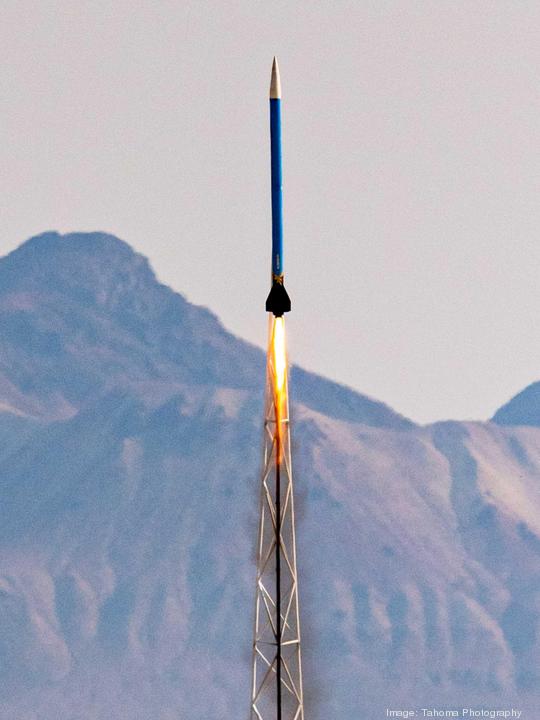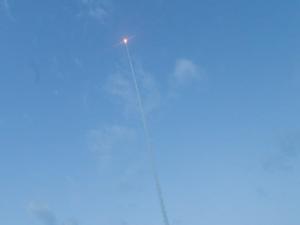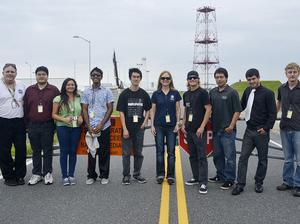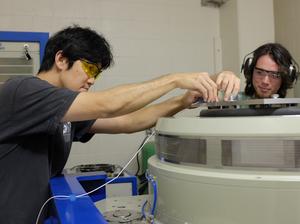
A team of University of Hawaii Community College students and faculty won a rocketry competition in the desert of Black Rock, Nevada in September, UH recently announced.
The group of 17 students and six mentors who comprised Project Imua took first place for the hybrid-motor class of rockets in the Association of Experimental Rocketry of the Pacific, or AERO-PAC, altitude contest when their 12-foot, 8-inch entry that reached 3,413 feet, or nearly two-thirds of a mile high.
Project Imua's blue rocket was named "Apophis," for the Egyptian god of chaos, in the joint faculty-student enterprise's ninth mission since its start in fall 2014. This rocket was designed and built by Windward Community College’s student team, and another team from Honolulu Community College designed an atmospheric sensing payload that went up with the rocket. The combined team received a certificate of award from AERO-PAC.
Also at the event, Windward CC rocketry team members Nikki Arakawa and Quinn O’Malley each placed second in the Extreme Altitude Contest for rockets in different classes that each built and launched.
“I had actually never launched anything that big ... so it was just so exciting to see it lift off the ground, go really high and then land as expected," said Arakawa in a video provided by UH.
UH received $41,500 in funding for the mission from the Hawaii Space Grant Consortium, which is supported by NASA.

Next up is Mission 10 — the development of a payload that will be launched into sub-orbital flight next summer from NASA's Wallops Flight Facility in Virginia. Project Imua has received $81,200 from the HSGC for it.
Project Imua Manager and Windward Community College Professor Joe Ciotti told Pacific Business News in an email that most of the participating students go on to earn engineering and physics degrees.
"Some aspire to work at NASA or other aerospace firms," Ciotti said. "With the recent success of private enterprises like SpaceX and Blue Origins, their career options have greatly expanded. Project Imua students like the same skills and follow that same procedures required by all NASA contractors involved in space flight, thus providing students a unique experience with aerospace engineering protocols."
Ciotti wrote the original grant for the program, with the purpose of designing, fabricating and testing small payloads for spaceflight, and the development of high-power sounding rockets, including exotic hybrid and sublimation-fueled rockets, while giving undergraduate students opportunities in STEM fields.
“People should know that it is a great opportunity to get hands-on experience in rocketry. And that it is an amazing opportunity and that the team is very passionate and dedicated with what they do,” said Jared Estrada, Project Imua rocketry team lead, in a statement.
The inaugural Project Imua mission on Aug. 11, 2015, funded by a two-year, $500,000 NASA grant, encompassed Honolulu, Kapiolani, Kauai and Windward Community Colleges and involved designing and launching a payload on a Terrier-Malemute two-stage rocket from the NASA Wallops Flight Facility in Virginia. The payload was a spectrometer to analyze the sun's UV intensity, and a photosensor to determine the sun's orientation.






